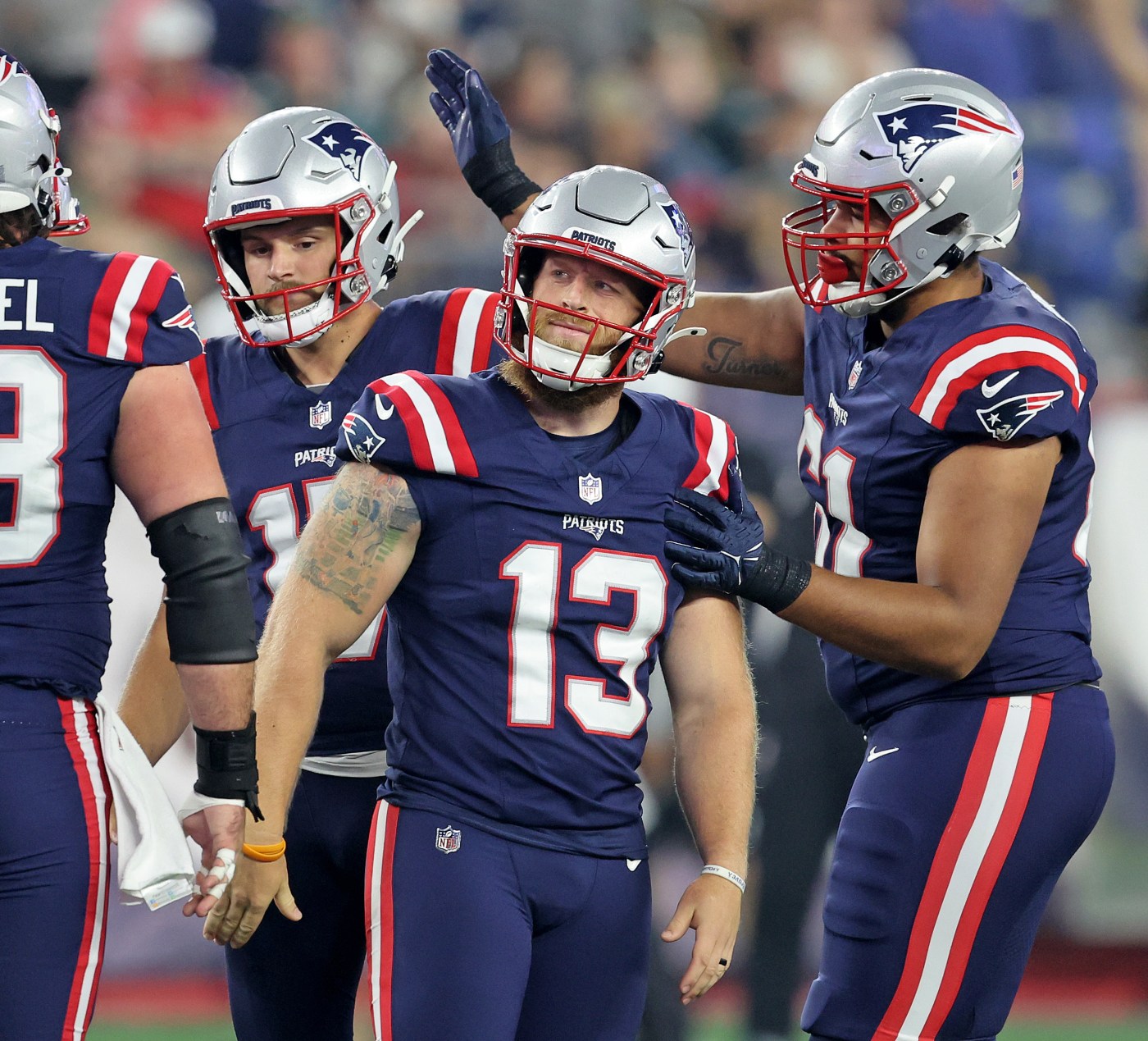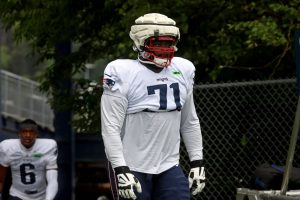
How Joey Slye’s size could give him leg up in Patriots kicker competition
FOXBORO — The Patriots’ kicker competition is tight between incumbent Chad Ryland and free-agent signing Joey Slye, head coach Jerod Mayo acknowledged Friday.
Slye, 28, is now 29-of-35 overall on field goals this summer, including hitting 3-of-3 in two preseason games. Ryland, a 2023 fourth-round pick, is 28-of-33 in practice. He’s hit 3-of-3 extra points in two preseason games.
Related Articles
Patriots switch positions along offensive line in first-team grouping
How Patriots QB Drake Maye can build on his success and 23 more film takeaways vs. Eagles
Patriots extra points: Raekwon McMillan a ‘tone-setter’ in return from injury
Drake Maye still could win Patriots’ Week 1 starting QB competition
How Patriots QB Drake Maye broke down his preseason game against Eagles
But the NFL’s new kickoff rule also must be considered when the Patriots are settling the kicker battle, since kickers could be more involved as tacklers. Slye, who’s listed at 213 pounds, played linebacker in high school and maintains that build vs. Ryland, who’s listed at 195 pounds, showed his value in that aspect during Thursday’s preseason game against the Eagles, coming up to the 35-yard line and forcing the Panthers’ lead blocker to take him on rather than eliminate another Patriots special-teamer, which could have broken a big play.
Example of why kickers have to get their noses dirty this year
If Joey Slye doesn’t come up, the lead blocker is free to take someone else and this might go house pic.twitter.com/HsKKS7QS3T
— Ted Nguyen (@FB_FilmAnalysis) August 17, 2024
Slye called it an instinctual play, rather than something he was coached to do.
“It was Will Shipley from Clemson kind of came up in that apex, and I could see where they were going,” Slye told the Herald on Saturday. “I think one of our fives kind of went backdoor, got blocked out of the play and so I was like, ‘I gotta kinda fill a little bit in here, and a lot of times, obviously with some of these schematics, if they see a body, they don’t know if it’s the kicker or if it’s the L-5, R-5 or whatever it might be. A lot of times if I can just show face in there, I can kind of maybe make a cut that breaks him back into our other coverage guys, and they make a tackle or whatever it might be. Just kind of an instinctual, fill the gap, make sure he can get kind of cut off, and we made the tackle on him.”
Slye said he trains five-to-six times per week during the season, which is different from a lot of other players, not just kickers.
“We’ve kind of set up a different gameplan that both satisfies my itch of wanting to be in the weight room as well as meets all of the markers of making sure that I’m set and ready to go to make sure I perform on gameday. I have a nice little happy medium there.”
Kickers kick from the opposing 35–yard line under the new rule, while the coverage team lines up on their own 40-yard line. Blockers line up starting at the 35-yard line, and only the kicker and returns can move before the ball is touched.
“With the rule, we’re going to be a little bit more needed in coverage with more returns but also just the way that everything is spaced out. We used to be someone who was a little bit more of a safety valve if anything broke. Now, we’re having to point out the returner, so different coverage rules. Then obviously a lot of us just used to hit the ball out of the back of the end zone, so now we actually are going to have a lot more returns.
“My size obviously is something that is different than most kickers, but obviously some guys might be a little bit faster, whatever it might be, but I think just the instincts of playing football when I was growing up, playing linebacker in high school and stuff like that, I just kind of see things a little bit from that perspective, vs. guys that may have just kicked their whole life. They don’t understand kind of the difference in kind of movement of when the gaps open up, like where the runs might be, anything like that. Just looking at it from a different approach. And then obviously the wear and tear of making tackles. If you’re 165 pounds, 170 might be a little bit hard to take on a returner that might be built like Cordarrelle Patterson still might be returning kicks. You’re gonna have to make tackles on him. And guys that are playing linebacker, safety in the league normally are struggling to make tackles on them. So just obviously, if I’m able to put a little bit more force behind my tackles, then I might be able to make a little bit more.”

